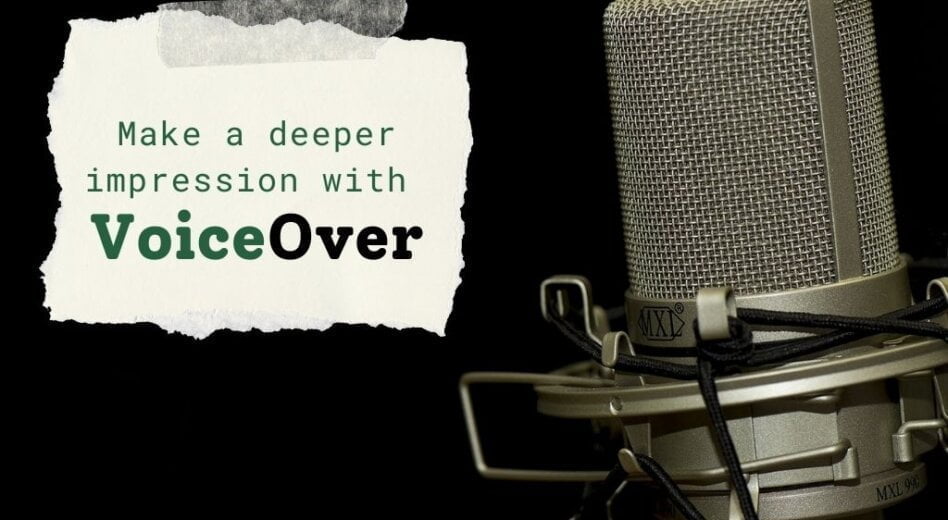When people take in information with both their eyes and their ears, their absorption increases exponentially. This may be the best argument for using voiceover when you localize your media for foreign markets: making sure your new audience hears your message in their own language.
Subtitling can be cheaper, but then your audience’s attention is divided and the connection to your information is less direct. Additionally, as they try to read the subtitles, they may miss other visual or audio details you have carefully orchestrated.
Whether you’re localizing instruction videos, advertisements, or entertainment, the first step is to create a script that will be translated and then spoken by a voiceover actor in your target language. You will want to closely track the timing of the words in your script, to make sure it fits precisely – second by second – with your video. That script should sound natural and engaging when you read it out loud.
Here are some simple tips for achieving an effective script tone:
- Trim the words and phrases as much as possible, to save money and keep your audience’s attention. This will also ensure that your new narrative fits within the framework of the existing video that was developed around a different language.
- Remove jargon and phrases people are so tired of that they don’t come alive.
- Watch that your language sounds natural and that it does not have the more formal tone of many written texts. For instance, use contractions, such as “can’t,” instead of cannot.
- Avoid acronyms – both translators and voice actors might stumble over them.
In other words, think about every word and listen to yourself or someone else read it out loud. Your professional translator will do the same with the translated version.
Once you’ve created the script and begun work with your translator, you will have some other decisions to make, such as the qualities of the voice actor you want to use. But before that, one of the most important decisions is what voiceover style fits best with your intentions. Assuming you do not plan to scrap existing media and re-shoot a video with foreign actors, you will want to decide which of the following voiceover methods to use.
- Dubbing – When done well, this can be the smoothest transmission of information for your audience. Blending the voice of a foreign-language speaker as seamlessly as possible with the original visuals, including the expressions and mouth movements of speaking actors, is a real art and takes time.
- Off-screen voiceover – The target language voiceover will be experienced as an invisible narrator describing and explaining what the audience sees onscreen. This is most effective with a video or visual montage that includes such elements as charts, tables, slides, and short video clips.
- UN-style voiceover – In this type of voiceover, the original voices are audible for a few seconds before a target language interpreter begins speaking and the original voices fade to background. This voiceover style preserves some of the attitudes of the original speakers and their languages, while offering your audience clear understanding.
- Voice replacement – The simplest form of voiceover, this process offers target language narration without an attempt to lip sync with the original actors. Script quality, timing, tone, and voice actor issues are all still important to pay close attention to, but the final product goal is not the same as it is with dubbing.
These are a few of the elements that you will want to consider for your voiceover projects. The language service experts you hire for voiceover work should have the experience to coordinate top-notch equipment, multiple languages, and professional voiceover talent skillfully, to produce exciting results.
J. V. McShulskis
